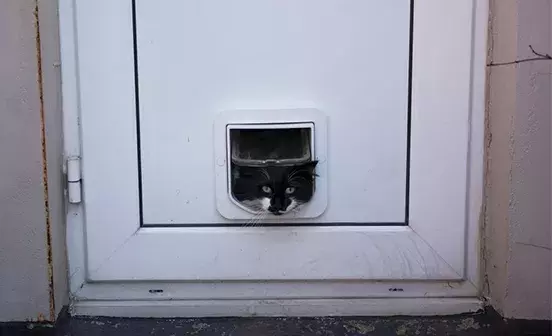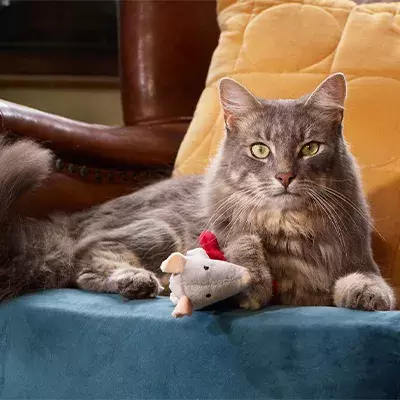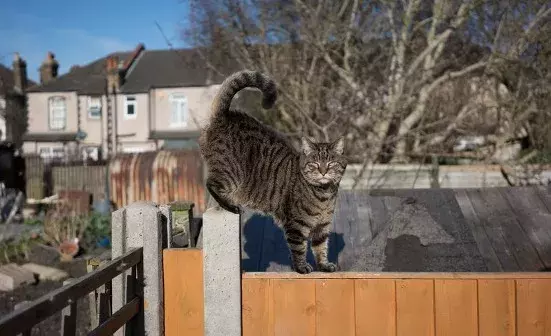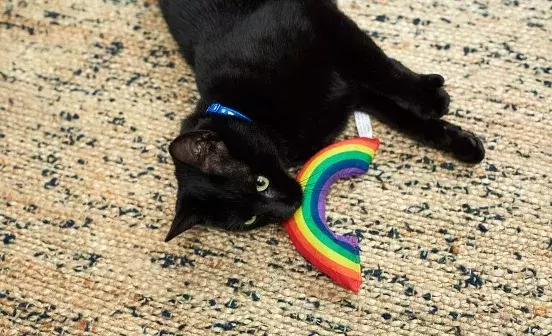While most cats can groom themselves, medium to long-haired cats may benefit from extra grooming in addition to it being a great way for any cat owner to bond with their pet.
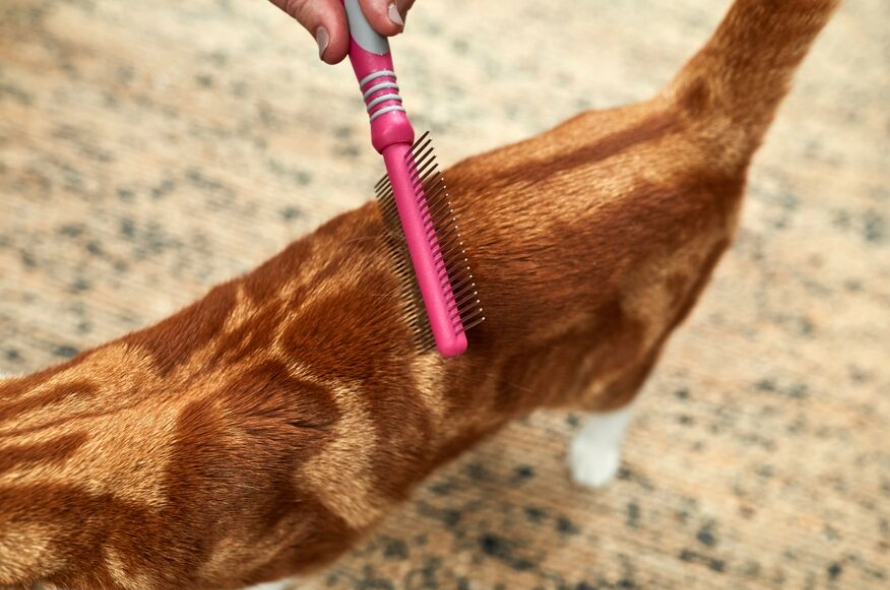
For the most part, cats are able to maintain their own coats and groom themselves. Their tongues are specially adapted with small spines which, when combined with their flexibility, help them remove loose hair and dirt from different areas of their body.
However, medium and particularly long-haired cats can benefit from some extra grooming from their owners, and even grooming short-haired cats can be enjoyed by both you and them.
WHY GROOM A CAT?
Medium to long-haired cats are more prone to matting than short-haired cats and so tend to require more grooming help from their owners. Grooming your cat daily will help keep their coat in good condition and, no matter their coat length, grooming your cat has a number of benefits:
- Grooming your cat helps to improve their muscle tone and stimulates the skin to produce oils that give their coat a healthy shine.
- Your cat will remove some hair when grooming themselves but daily help from you can remove most of the loose hair. This helps to guard against matting and prevent the formation of hairballs.
- Grooming provides you with the opportunity to give your cat a quick once over, concentrating on their ears, eyes and mouth and to check for fleas, ticks, ear mites or any lumps or bumps.
- If done in the right way, grooming can be therapeutic for both you and your cat and should be a positive way to enhance the bond between you.
HOW TO GROOM A CAT
Always groom your cat when they are relaxed and happy and have already chosen to interact with you. Grooming is a form of human touch, so you need to be familiar with the areas your cat prefers to be touched before you start grooming your cat.
To begin, hold out the brush to your cat (as you would your hand) to see if they choose to sniff and rub their face against it to deposit their scent. This is their way of making the brush smell familiar to them.
Cats particularly enjoy being stroked around the face, so it is a good idea to start with a few strokes of the brush on the head and cheek areas before moving onto other parts of the body. Always groom in the direction of your cat’s fur. If your cat is comfortable or enjoying the grooming around the head region, move onto a few grooming strokes in between the shoulders and along the back.
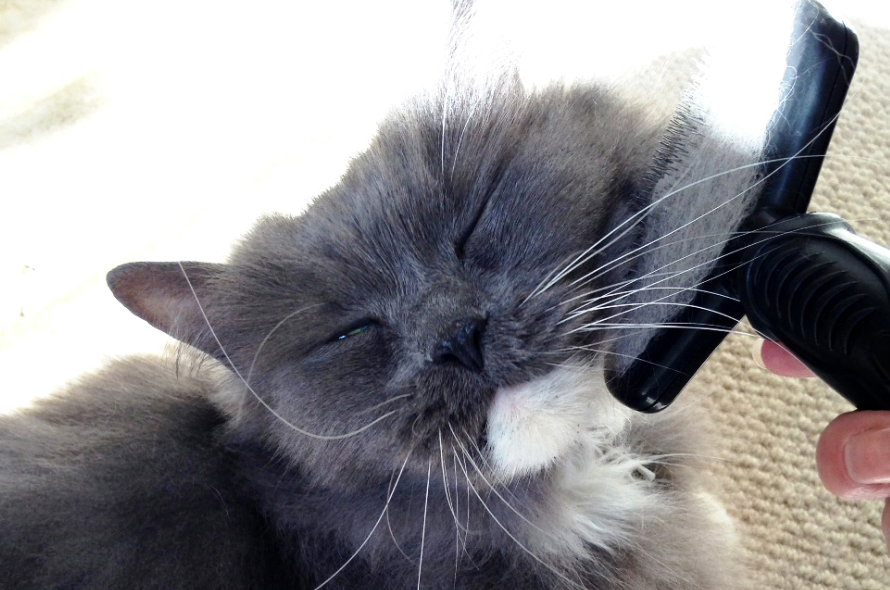
The tummy area is a sensitive area for a cat, so a lot of cats prefer not to have this area touched. It’s a good idea to groom your cat in short bouts as this will help them feel in control of the situation. Allow your cat to choose whether or not they would like to rub a certain part of their body on the brush first.
Grooming sessions should be as long or short as your cat is comfortable with. Remember to take the brush away every now and then and re-offer the brush to your cat as a way of checking that your cat is still comfortable for the grooming to continue.
SIGNS YOUR CAT IS NOT HAPPY BEING GROOMED
The session should be ended before the cat shows any signs of stress or discomfort including the following:
- Skin rippling or twitching particularly on the cat’s back
- Tail swishing or thumping
- A sharp turn of the cat’s head towards your hand or the brush
- Any sudden freezing or tense behaviour
- Individual ear flicking or both ears rotating backwards
- A swallow or lip lick
- Head shakes
- A rapid burst of grooming to a localised area of the body
- Hissing or growling.
In general, always try to ensure that your cat is relaxed and happy to be groomed so that grooming becomes and remains a positive experience for your cat.
HOW TO GROOM A KITTEN
When you first get a kitten it’s important to get them used to being groomed from a very early age. You should gradually build up the amount of time you spend grooming your kitten until your kitten is quite happy to allow you to brush them. You can start by gently using a clean soft toothbrush as a small brush to help your kitten gradually get used to being groomed before progressing to larger brushes.
Over time, a lot of kittens start to enjoy being groomed all over and will come to see it as an enjoyable part of their daily routine. Like adult cats, some kittens may be much more tolerant of being handled and groomed than others. Exposure to grooming and handling in general should be built up gradually, without it being a negative experience for either you or the cat. A cat should never be ‘forcibly’ groomed or stroked without the option to move away if they are finding the experience stressful.
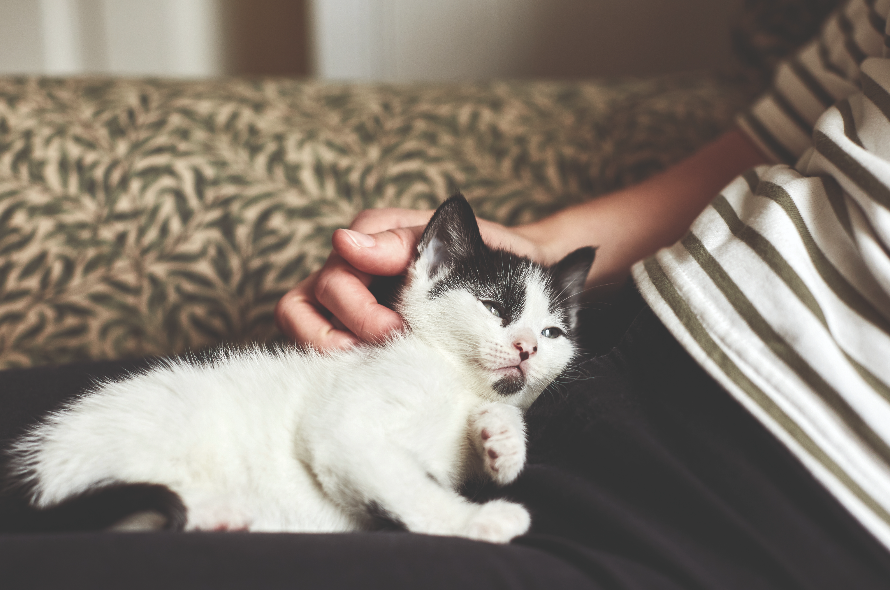
If your cat or kitten is used to being handled sensitively from a young age, it will make it easier for your vet to examine your cat and the experience will be much less stressful for both your cat and you.
HOW TO HELP A CAT BECOME COMFORTABLE WITH GROOMING
If you’d like to find out more about how to help your cat become more comfortable and accustomed to being groomed, you can find more information via this video from International Cat Care.
BATHING AND DE-MATTING YOUR CAT
If your cat is healthy, there is generally no reason to give your cat a bath – most cats really don’t enjoy it. You should only bathe your cat when specifically advised to do so by a vet. If your cat rolls in something unpleasant, check with your vet for advice on what to do.
If you come across matted fur somewhere sensitive, like your cat’s tummy, there are two options. If your cat is comfortable with being touched there, you can tease it apart gently using your fingers from root to tip. If your cat is uncomfortable and you’re noticing that the matt is getting bigger, you should wait for a time when your cat is relaxed and comfortable before attempting to do a quick safe snip with some scissors, taking extra care to avoid your cat’s skin.
If your cat isn’t yet used to being groomed and their coat is becoming increasingly matted or is severely matted already, we’d recommend asking your vet for advice on how best to address this for your cat.
WHICH CAT GROOMING BRUSHES ARE BEST?
There are several different types of cat grooming brushes available to buy so it’s important to understand what each one does in order to get the best one for your cat.
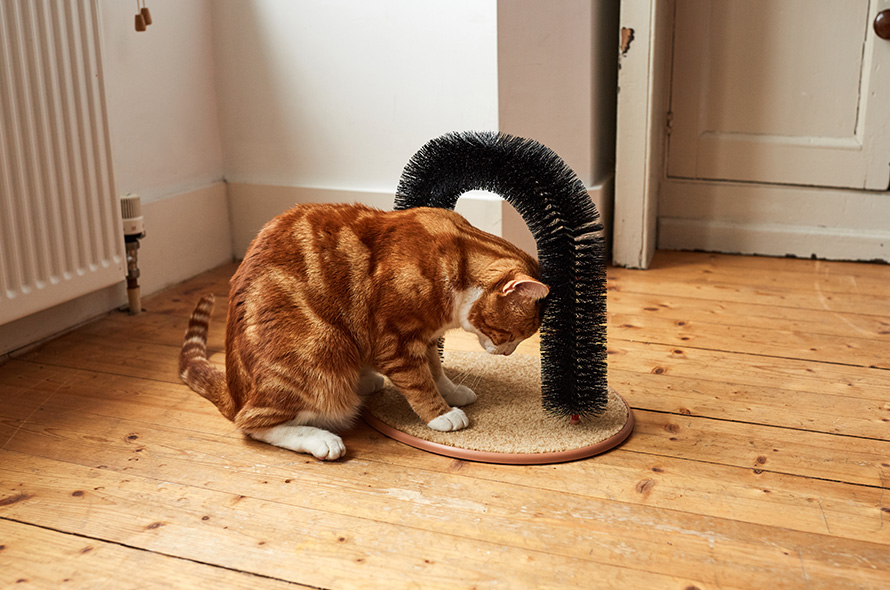
Slicker brush
Type: Curved/Slanted brush with very thin hooks.
Ideal for: Medium to long-haired cats.
Purpose: To remove dirt and dead/loose hair. Helps to prevent matting or with removing.
Dual-Sided brush
Type: Fine-toothed brush on one side, soft bristle brush on the other.
Ideal for: Short to medium-haired cats.
Purpose: Great as a combination brush. The fine-tooth brush helps to remove dirt and tangles while the soft bristle brush aids with spreading natural oils to give a nice shine and condition to your cat’s coat.
Mitt Brushes
Type: A hand mitt with a rubber toothed side.
Ideal for: All coats.
Purpose: Great as a beginner brush as the action is more like stroking the cat rather than grooming them. This means some cats may not know the difference. They help to remove dirt, dead/loose hair and leaves the coat feeling sleek and smooth.
FURminator
Type: Fine toothed shedding blade.
Ideal for: All coats.
Purpose: Removes both the top coat and undercoat to get rid of excess dirt, and loose/excess hair.
Moulting comb
Type: Comb with different pin lengths.
Ideal for: All coats.
Purpose: The longer pins go through the top coat to detangle knots and remove the undercoat whilst the shorter pins help to gather the loose fur.
Grooming Comb
Type: Comb with same length pins.
Ideal for: Long-haired cats (a comb with larger spaced out teeth) and short-haired cats (a comb with teeth close together).
Purpose: Helps with untangling knots.
Pin Brush
Type: Brush with pins.
Ideal for: All coats, particularly medium and long-haired cats.
Purpose: Helps with removing knots and tangles which in turn prevents matting. The pins help to neaten the coat as it easily goes through the fur to the undercoat.
Rubber Brush
Type: Brush made of rubber. ‘Kong Zoom Groom’ brushes are best as they fit in the palm of your hand.
Ideal for: All coats. Good as a beginner brush, particularly for cats that hate being groomed.
Purpose: Helps to massage your cat’s skin and distribute healthy oils for a shiny coat. Helps to remove loose fur, particularly cats prone to shedding.
Bristle Brush
Type: Soft bristles.
Ideal for: All coats.
Purpose: For short-haired cats this can often be enough of a tool for grooming alone, giving them a shiny, sleek coat. For long-haired cats, this is a good finishing brush for a smooth and shiny coat but will require a different brush for detangling etc.
